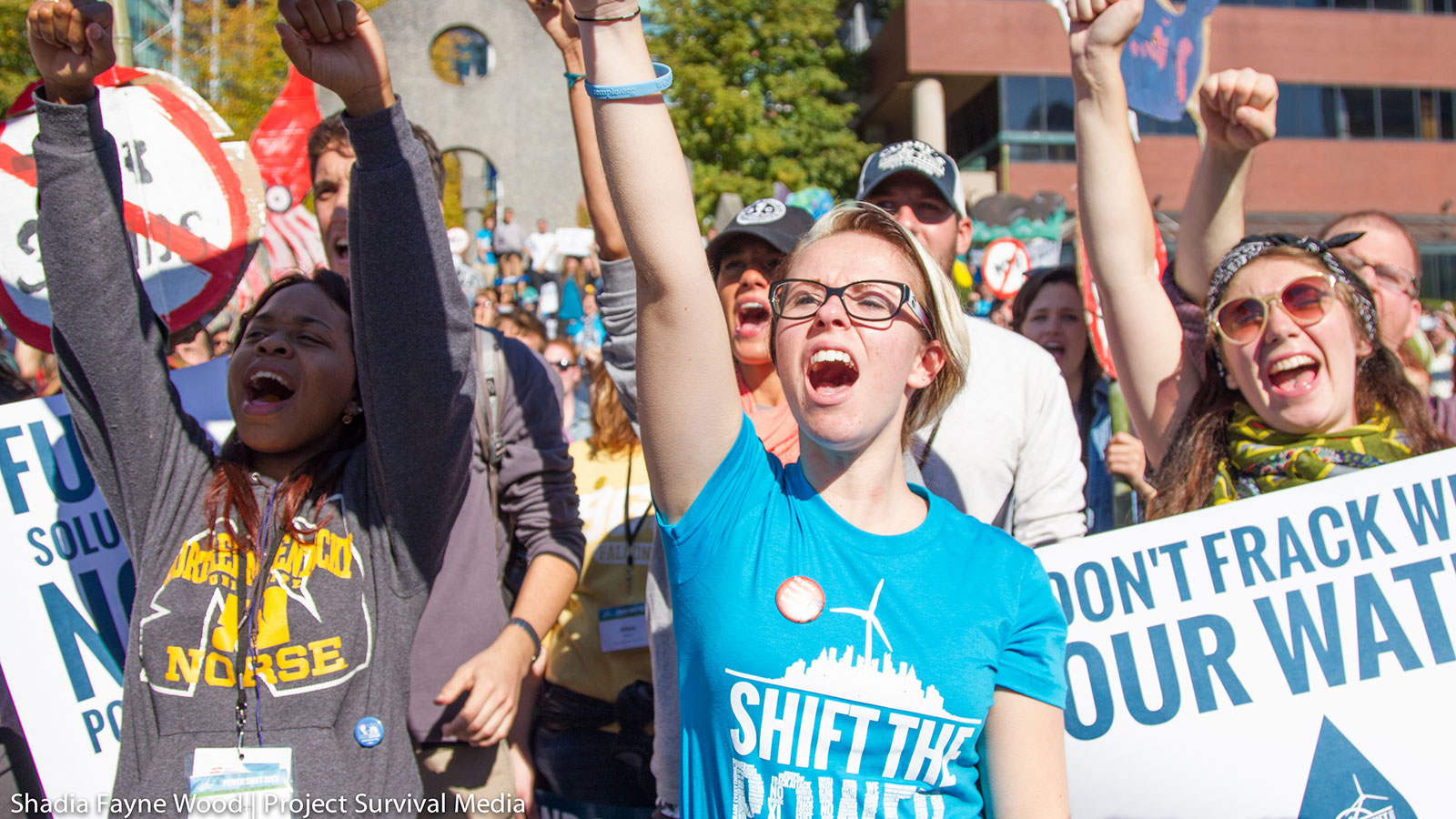The phrase “nuclear freeze movement” sounds quaint these days. To the ears of anyone under 40, those are musty, obscure words like “Studebaker” or “rotary telephone.” The threat of a nuclear war between the U.S. and Russia seems so remote that today’s typical young activist has never even contemplated the possibility, much less rallied against it.
But once upon a time, back when hair metal bands topped the pop charts, nuclear annihilation was the obsession of earnest liberals. It seemed to many as if the very future of the planet hung in the balance, and that our irresponsible political leaders — Republicans especially — were blithely going over the edge. It was, in other words, a lot like climate change today.
And just as environmentalists say Americans must organize around climate change to halt us on our path to destruction, their predecessors organized around nuclear disarmament. On June 12, 1982, they came together in New York City for the largest demonstration in American history. As many as a million people marched through the streets of Manhattan, and then rallied in Central Park, to draw the attention of world leaders assembled for the United Nations Special Session on Disarmament.
Embed from Getty ImagesIf you’re just hearing about this for the first time, it sounds like some odd passing fad — the hula hoop or parachute pants of political activism. The movement disappeared and nuclear weapons are still with us. Sounds like the epitome of ineffectual, short-attention-span protest, right?
And yet the organizers of Sunday’s People’s Climate March actually point to it — repeatedly, and without prompting — as inspiration for what they are trying to achieve. It all comes down to your theory of change. To the climate march’s organizers, the anti-nuclear rally proved the value of movement-building through an event.
Speaking in 350.org’s promotional video for the march, Leslie Cagan, a veteran activist who worked on the 1982 nuclear freeze rally, recalls that it galvanized the nascent movement. “One of the interesting things about that demonstration is that some 600 local groups were formed. And many of those groups lasted for years afterwards,” says Cagan, who is working with 350.org as an organizer of the climate march. “For me, the real power of that day was the organizing that led up to it and then the organizing that came out of it.”
Paul Getsos, national coordinator for the climate march, also mentioned the nuclear disarmament rally in an interview with Grist, saying that it turned movement newcomers like him into activists. “It was the culmination of 18 months of organizing and led to people going back to their community and organizing,” said Getsos, who attended the nuclear rally as a teenager. “I had never been to a rally before, and I went back and volunteered on nuclear weapons and other issues.”
And so movement-building is central to the rally’s purpose, not a mere byproduct. This Sunday’s march is not the culmination of the campaign to pressure governments for a strong climate agreement in Paris next year, but hopefully just the beginning of such a campaign. The march’s focus on climate justice is bolstering efforts to expand the size and diversity of the movement. The emphasis is not on glaciers and polar bears, but on all the different people who will be affected. And so it aims to bring those communities, even some seemingly unlikely ones, like blue-collar unions, into the movement.
“We’ve achieved a lot before we even put one marcher into the street,” says Getsos. “We have new partners in new constituencies like people-of-color organizations, faith-based leaders, unions, environmental-justice communities, multi-issue organizations, thousands of new activists. If we all keep working together post-march, that is a significant change.”
It’s as good a theory as any. There is no empirical data to suggest that any one approach to protest is better than another. The risk of any protest is that it draws turnout and makes headlines, but results in no actual policy changes. Just in recent years, the massive anti-Iraq War and pro-immigration reform rallies come to mind.
“The actual impact of social movement actions is really poorly understood because it’s really hard to study,” says Michael Young, a sociologist at the University of Texas who studies social movements. “Good studies that would compare and contrast different kinds of actions that could compare the relative impact, we don’t really have them. Anecdotally, scholars have noted that a lot of very impressive rallies have amounted to nothing.”
If one common theme does emerge from past protests, it’s that big rallies work best as part of a larger, longer, multi-pronged movement, rather than a singular event. The March on Washington was a high point in a decades-long legal, social, political, and cultural Civil Rights Movement that was fought at the local, state, and federal levels. It’s remembered as a success because the Civil Rights Act passed the next year, but the march alone did not make it happen.
So that’s why 350.org points to the anti-nuclear rally as an example of a major event catalyzing a larger movement. But for it to stand as a model worth emulating, it would have had to succeed. On the surface, it doesn’t look like it did. The U.S. and eight other nations still have more than 16,000 nuclear weapons. But the climate march organizers genuinely don’t think the anti-nuclear rally was a policy failure at all. As with climate change, success in the anti-nuclear movement is measured in the dissatisfying currency of catastrophes averted. Although nuclear weapons have proliferated, they still have not been used since World War II. President Reagan shifted his nuclear policy toward reduction, and even talked of total disarmament, after the 1982 rally. Jonathan Schell, the author of the nuclear freeze era’s signature book, The Fate of the Earth, wrote in The Nation in 2007: “It is a matter of record that the [anti-nuclear] movement powerfully undercut public support for Reagan’s nuclear buildup. According to a CBS/New York Times poll, between 1981 and 1985 support for increases in military spending dropped from 61 percent to 16 percent. It is a matter of record, too, that in response Reagan returned to nuclear arms negotiations with the Soviet Union.”
If Ronald Reagan could be persuaded to shift his policies by a bunch of protesters in New York, then anything is possible. That’s what the People’s Climate March is betting on.




